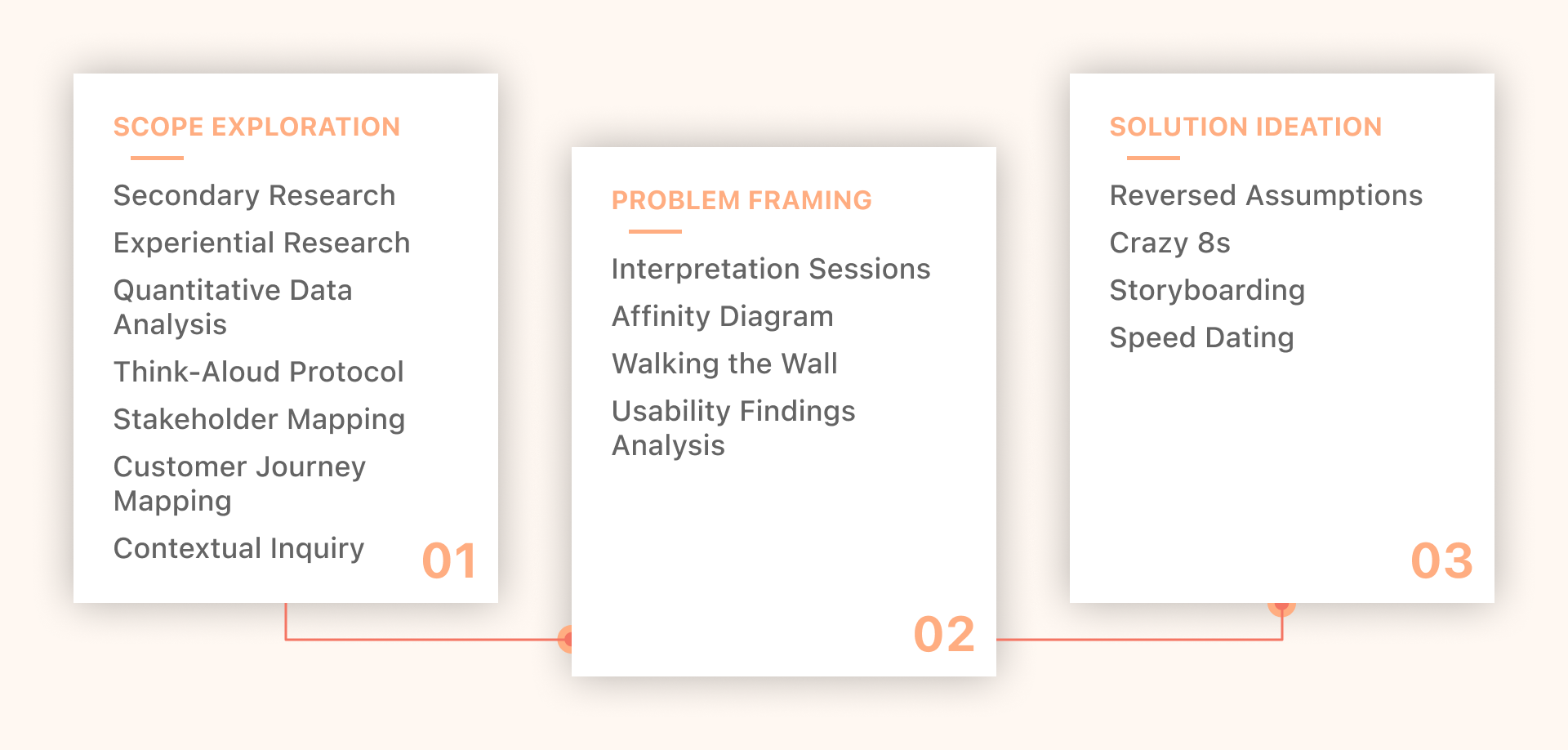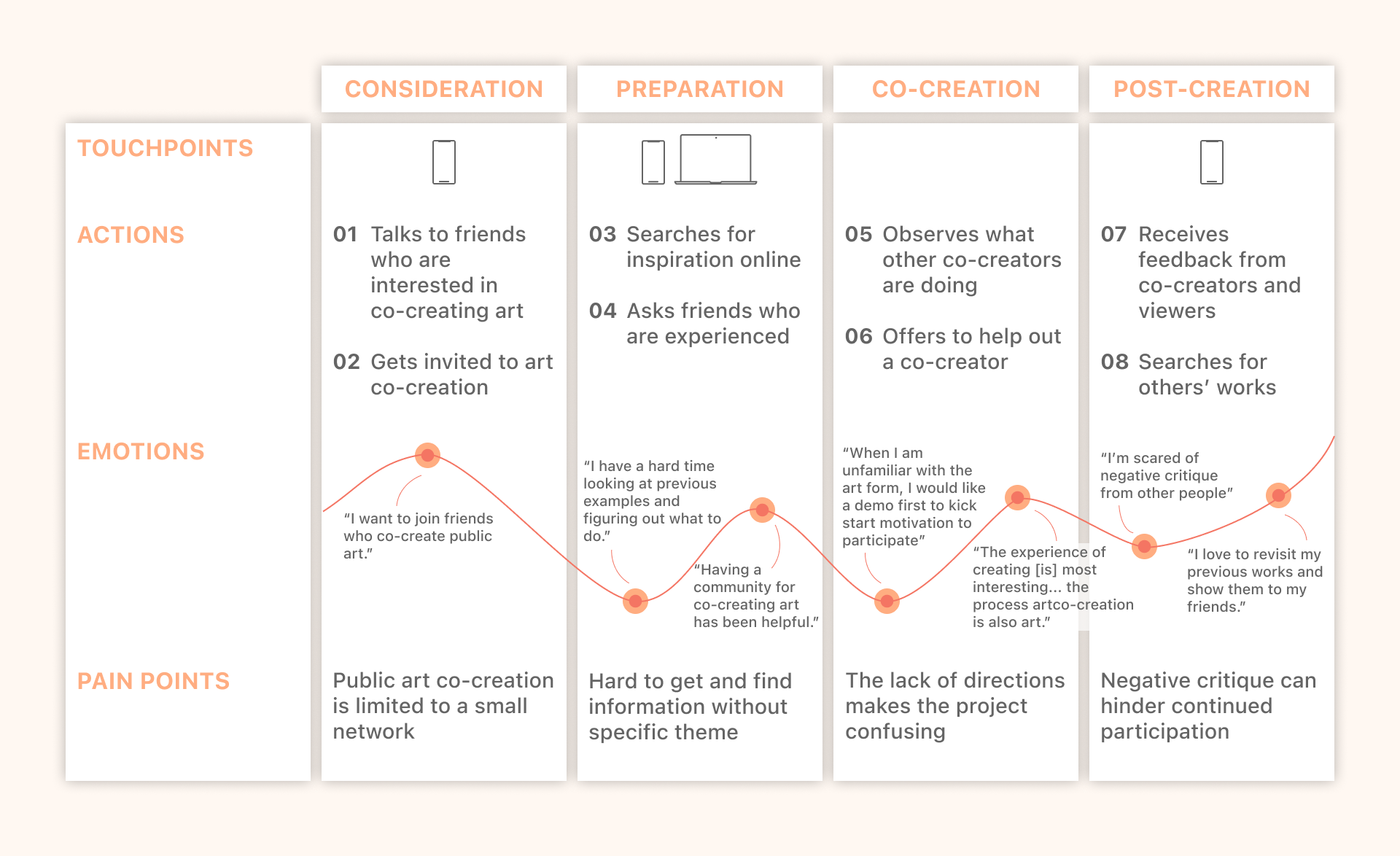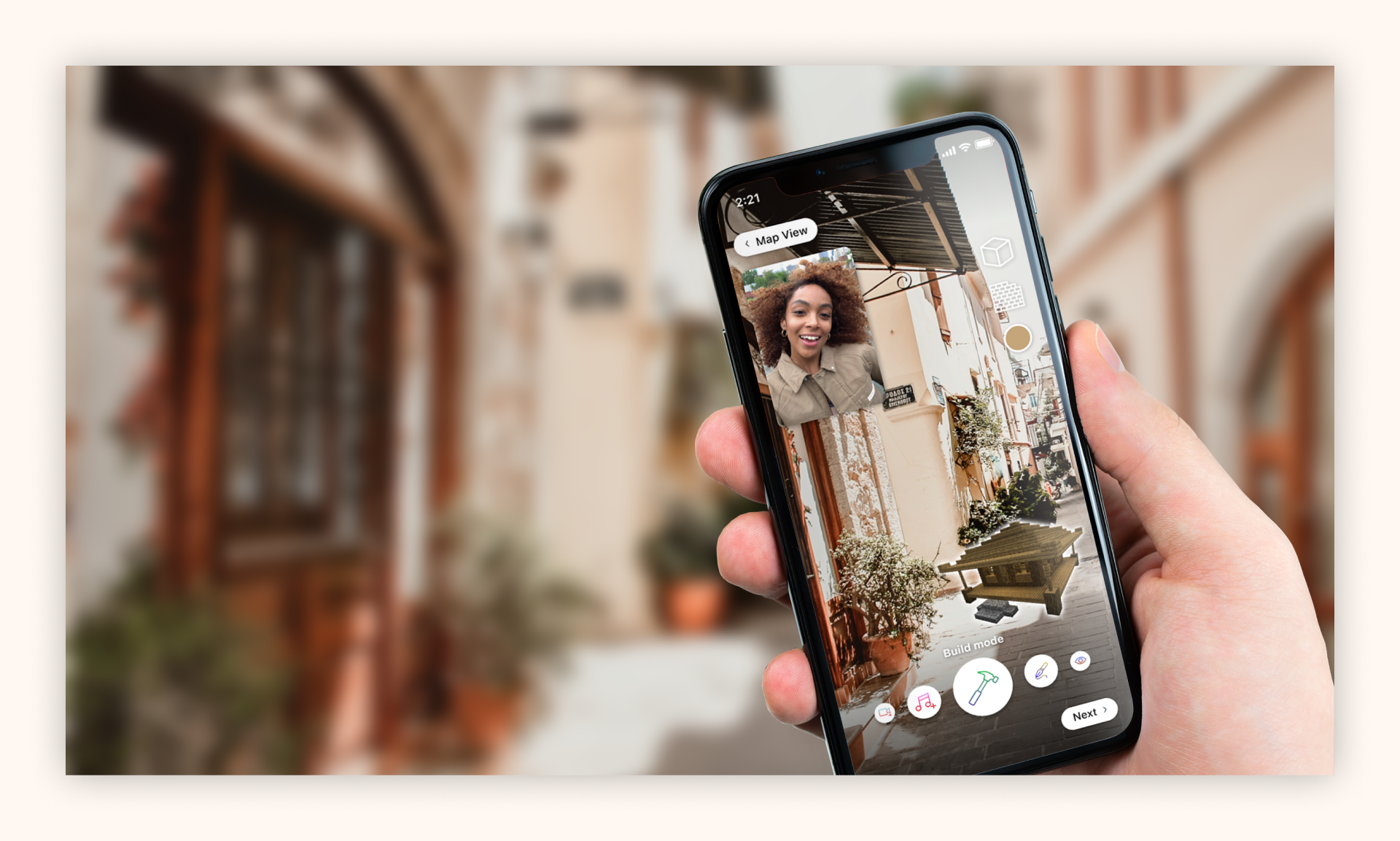
Project Background
Problem
Public art co-creation is unfamiliar to many, yet this could help foster qualities that make cities more measurably livable.
Insight
People need the motivation to enjoy the outcome and experience of co-creating through synchronized working and a low threshold for collaboration.
Outcome
A mobile app that uses Augmented Reality (AR) to allow users to co-create art with friends and families on top of existing landmarks around the city
How might we encourage the general public to participate in art co-creation while feeling connected to the community and confident about expressing themselves?
Every form of art is very personal, including community-driven art is personal. However, we still lack a system in which each creator can contribute to the creation process with a lower threshold while enjoying themselves.
Three Phases of Research

Customer Journey Mappping
This customer journey map represents what a first-time co-creator of public art experiences. I gathered this from primary research and visiting public art pieces in downtown Pittsburgh.

Contextual Inquiry and Affinity Diagramming
We interviewed and probed five participants to understand people’s attitudes on public art. We identified gaps and opportunities in the public art co-creation process. We then analyzed our results by conducting interpretation sessions for each interview. After which, we synthesized these sessions through affinity diagramming.
Think-Alouds and Usability Findings
We conducted think-alouds on an art co-creation game online, A Fake Artist Goes to New York. We then gathered insights on users’ needs when collaborating and synthesized our results using usability findings.
Storyboarding and Speed Dating
We determined five potential areas of need and created three comic-based stories for each area. In the speed dating sessions, we presented participants with these storyboards, and we probed them for their feelings towards each storyboard. The storyboards and speed dating sessions revealed the prioritization of sub-problems.
From the previously stated user research methodologies, our team discovered the following insights:
Motivation for Outcome and Process
People need the motivation to enjoy the outcome and experience of co-creating. Friends and family members can also serve as motivation for people to participate in the art co-creation process. People also value the process more than the final product.
Building the Community through Interactions
People value working in a synchronized environment, which also gives them a sense of building the community. Synchronized collaboration enables interactions among participants and inspires creativity through real-time communication.
Low Threshold for Collaboration
There needs to be a low threshold for the art co-creation process for people to feel comfortable to participate in it. Each contributor should be able to express themselves alongside their friends.
Negative Critique Unwelcome
People fear negative critique, users should not exposed to this. Since art is very personal, people also feel that art critique is personal.
CreArt is an AR art co-creation app that allows users to co-create art with friends and families on top of existing landmarks around the city.

Livability
We identified that art co-creation contributes to the livability of a city. CreArt contributes to the livability of a city by:
Motivation
Motivation is essential in bringing people to co-create art. CreArt helps generate users' motivation by:
Collaboration
The design of the co-creation itself is important to users. CreArt improves the collaboration experience by:
Uniqueness
CreArt is a uniquely designed platform that aims to increase the livability of the city by:
Measurability
CreArt can measure its impact on specific aspects of the livability of a city, such as:
Journey

Screen Designs
Lessons Learned
In this process, I learned numerous user research methods, such as contextual interviews, affinity diagramming, think-alouds, and storyboarding and speed dating. These methods were especially difficult to use and learn from in the face of social distancing and lockdown guidelines, so all of these methods were conducted online. In light of this, I learned how to work better with teammates online and be more analytical, especially in probing interviewees for insights and unique discoveries.